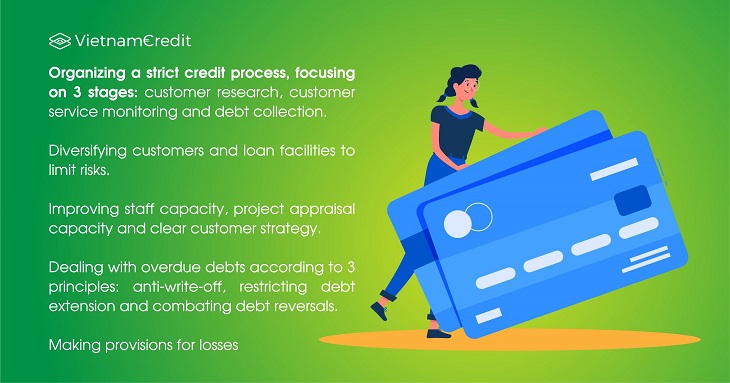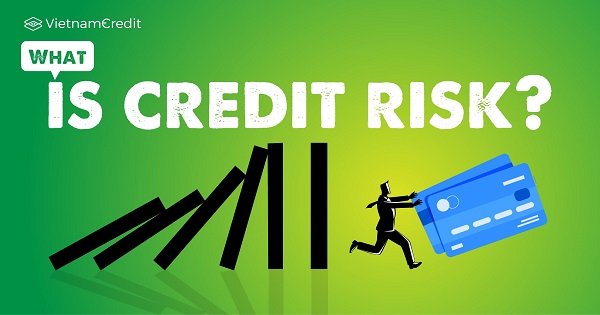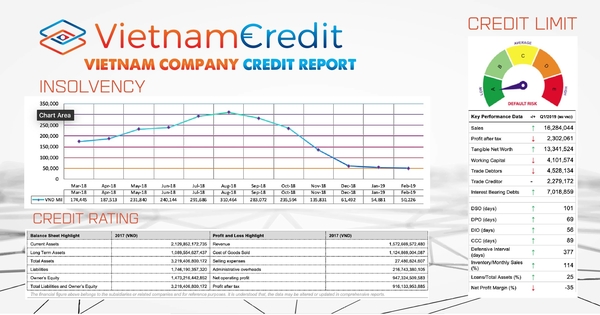Credit risks can occur at any time and can have very serious consequences for both banks and borrowers.
Credit activity is the basic activity of banks, which is also the main source of income for commercial banks. However, this activity poses a lot of risks. Credit risks may cause financial losses, reduce the market value of bank capital, and in more serious cases, banks’ business activities may be at credit losses, bringing banks to the brink of bankruptcy.
1. Credit and credit risk
To understand what credit risk is, people must firstly understand the concept of credit. Credit is an illustration of the economic relationship associated with the process of creation and use of a credit fund for the purpose of satisfying the temporary capital needs for reproduction and life, on the principle of repayment. Simply understood, credit represents loan and loan relationships.
Credit risk is the risk arising due to the borrower's failure to strictly comply with the terms of the credit contract, which may be deferred payment, not fully repaying the principal and interest of the loan or late payment of principal and interest after being granted credits, leading to financial losses for the bank.
In addition, credit risk is not limited to lending activities but also associated with many of the bank's other credit-related activities including guarantees, commitments, trade finance approvals, interbank lending, valuable securities (bonds, stocks ...), government bonds, swaps, hire-purchase credit, co-financing ...
>>> See more: Credit Rating Scale Of VietnamCredit
2. Impacts of credit risks
As mentioned above, credit risks bring damages to banks, indirectly affecting the economy and society in general.
Credit risks make banks lose the opportunity to receive interest income, which impacts on profits and the equity capital. In addition, the capital used for lending is mainly mobilized from customer deposits, so in case of bad debts, many banks have to use their capital to pay depositors. When banks no longer have enough capital to pay depositors, they will fall into insolvency, which can lead to bankruptcy.
Banks are financial intermediaries, functioning to mobilize idle capital in the economy so that it can be re-borrowed by organizations and individuals. Lending capital to customers is mainly from people's savings deposits. Therefore, when credit risk occurs, not only banks but also customers who deposit money suffer losses.
Today, the operation of a bank is highly socialized, so once credit risk happens, it will greatly affect the socio-economy of the country. If there is a risk in credit activities that cannot be solved in time, even in a single bank, it may cause a chain reaction threatening the safety and stability of the whole banking system. This, in the end, will cause economic and social instability. It is obviously shown that credit risks can cause enormous and unforeseen losses to a nation's economy and society.
>>> See more: What you need to know to mitigate credit risk
3. How to avoid credit risks?
There are many types of credit risks including those come from borrowers, transactions, or objective causes of the market and banking system, etc. No one can predict these risks. Therefore, measures to prevent and limit credit risks should be carefully researched to suit the business operation characteristics of each bank.
In order to limit the credit risks that may occur, banks can apply the following measures:
- Organizing a strict credit process, focusing on 3 stages: customer research, customer service monitoring and debt collection.
- Diversifying customers and loan facilities to limit risks.
- Improving staff capacity, project appraisal capacity and clear customer strategy.
- Dealing with overdue debts according to 3 principles: anti-write-off, restricting debt extension and combating debt reversals.
- Making provisions for losses

The questions about what credit risk is as well as the impact of credit risk on the economy in general and banks in particular have been answered. VietnamCredits hopes that customers can have more information as well as apply the knowledge above in their work and life.
























































